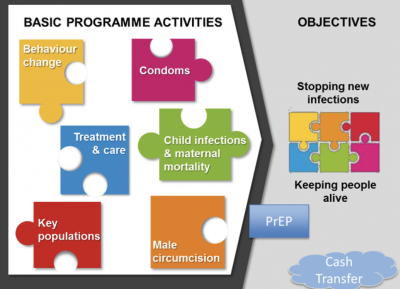
Read the full impact case study here
The HIV field has, by and large, acknowledged the necessity of addressing the structural barriers to effective HIV prevention and treatment. The question remains, however: how to pay for these efforts?
Examining synergies between the structural drivers of HIV and broader health and development goals, STRIVE researchers developed a co-financing mechanism to assess the cost-effectiveness of interventions that generate benefits across several sectors, and dividing the costs accordingly.
The Health Economics and Epidemiology Research Office (HE2RO) at the University of the Witwatersrand – commissioned to lead the modelling and costing of the South African HIV Investment Case – took up the co-financing approach and applied it in their modelling. Subsequently, the country’s National Strategic Plan (NSP) included exploring cross-department co-financing as an innovative financing strategy.



